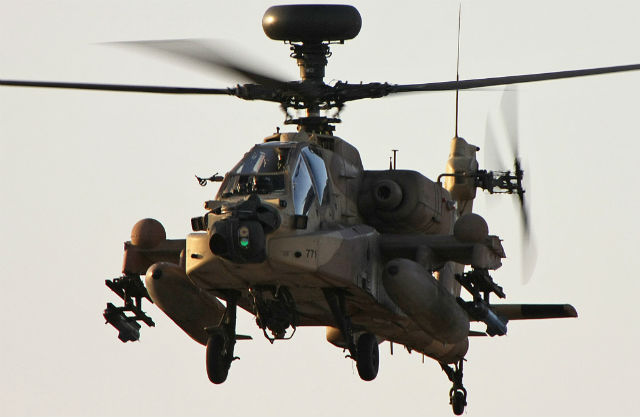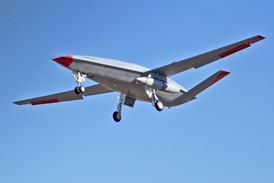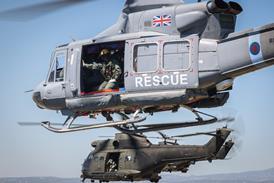The Israeli air force is equipping its Boeing AH-64D Apache Longbow attack helicopters with two new systems that will improve the aircraft's capability to defend itself from threats.
According to an official at the service headquarters' weapons systems unit, the additional systems will detect the threat posed by missiles equipped with infrared or radar seekers. While he declines to provide further details, the officer – identified by the Israeli air force magazine as Maj Yonatan – says the systems are "based on the huge operational experience of the force in using the Apache Longbow in a variety of combat scenarios".
The new sensors have been trialled in recent months on a series of test flights, and series installation will begin soon.
Introducing the expanded self-defence capability is just one part of a wider air force effort to make the AH-64D the premier tool for performing precision strikes. "This is the ultimate war machine for short- and long-range precision missions," Apache Longbow pilot "Lt N" says.
Speaking to Flightglobal during a rare visit to the Israeli air force's "Hornet" squadron at Ramon air base, the pilot and other officers described the capabilities of the Apaches that the unit operates. These include new-build AH-64Ds, and earlier A-model examples which have been upgraded to the newer standard.

Israeli air force
"The two have equal capabilities," Lt N says. He refers to the Lockheed Martin AGM-114 Hellfire missile as one of the weapon systems used by the type, but is reluctant to mention other armaments. However, it is known that Israel's Apache Longbows carry a variety of air-to-surface missiles, some of which were developed by Israeli companies.
Operational activities by the Hornet squadron include training closely with ground forces such as infantry and armoured units. "We sit for long hours in tanks, and the tank commanders fly with us. This is the only way we can understand each other in combat," one pilot says.
The Israeli aircraft are also equipped with advanced systems which enable crews to communicate with personnel on the ground. "This is crucial, especially in surgical operations, when it is important to pull the trigger only when we are sure that only the designated target will be hit," the pilot adds.
Maj Y, the squadron's technical officer, says some of the local upgrades to the Apache Longbow are performed on the base, with the help of its maintenance squadron. "This helicopter was designed to serve as a platform for many systems, and it performs the task in the best way compared to any other helicopter," he notes.
Operating the Apache from the desert base at Ramon does not put any limitations on the attack helicopter, Maj Y says. "We take extra care to protect the crucial systems from sand particles, and in such a way [that] this awesome machine can give us the maximum," he adds.
Source: Flight International
















